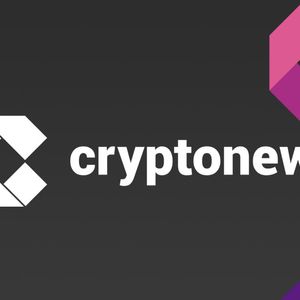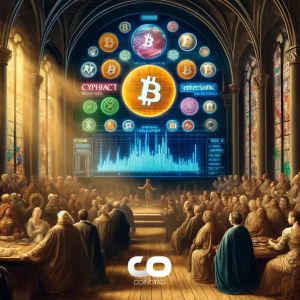A group of Ethereum developers is working on two major projects aimed at improving the network’s scalability and interoperability while reinforcing its foundational principles. The first, Ethereum R1, is a new tokenless layer-2 rollup designed to maintain decentralization and resist centralized control. The second initiative introduces ERC-7828 and ERC-7930 — two proposed token standards to standardize how blockchain addresses are displayed and interpreted across different chains. Ethereum Developers Launch R1 Rollup to Challenge L2 Status Quo Amid Fee Collapse and Governance Concerns An independent group of Ethereum developers has launched Ethereum R1, a tokenless layer-2 solution designed to preserve Ethereum’s core values of decentralization and neutrality — reigniting debate over the role and direction of Ethereum’s scaling ecosystem. A coalition of developers operating outside the Ethereum Foundation unveiled Ethereum R1 on May 1, positioning it as a “credible neutral” layer-2 (L2) rollup that rejects the trends of venture funding, token-driven incentives, and centralized governance that have become increasingly prevalent among L2 solutions. The initiative arrives at a critical juncture for Ethereum, where base layer revenues are collapsing, L2 networks are proliferating, and concerns are mounting over whether Ethereum's scaling roadmap is veering away from its original ethos. “General-purpose L2s should be commodities — simple, replaceable, and free from centralized dependencies or risky governance,” the team declared in an X post announcing the rollup. “Ethereum R1 is our answer to that call — the rollup grounded in credible neutrality, decentralization, and censorship resistance.” A Tokenless Alternative in a Token-Fueled Ecosystem What sets Ethereum R1 apart from other L2s is its uncompromising design philosophy. The developers behind the project have emphasized that R1 will not include a native token, will not accept venture capital, and will rely entirely on community donations to sustain itself. It also forgoes any form of governance token, an increasingly common element of L2 ecosystems that critics say concentrates decision-making power and financial incentives in the hands of a few stakeholders. This approach stands in sharp contrast to many of today’s L2s, such as Optimism and Arbitrum, which launched with sizable airdrops, foundation allocations, and VC participation. Critics argue that these tokenomics often skew incentives, creating L2s that behave more like standalone L1 blockchains rather than Ethereum-native scaling solutions. “Most L2s today are acting more like new L1s than an Ethereum scaling solution — private allocations, opaque governance, and centralized control,” the Ethereum R1 team wrote. Ethereum R1’s launch follows the Dencun upgrade in March 2024, which drastically lowered transaction fees across the Ethereum L2 landscape by introducing “blobspace” — a new data storage layer for rollups. While this achievement was hailed as a major step forward in improving user affordability and scaling potential, it came at a heavy cost to Ethereum’s base layer. According to data from Token Terminal, Ethereum’s base layer revenue collapsed by 99% by the end of Q1 2025, as most transactional activity migrated to cheaper L2s. In April 2025, average transaction fees on Ethereum fell to a five-year low of $0.16, sparking debates within the community about whether the base layer was being hollowed out in service of L2 expansion. Ethereum’s base layer revenue collapsed in Q1 2025 (Source: Token Terminal ) This has led to a paradox: while Ethereum is scaling efficiently through L2s, the financial sustainability of its L1 infrastructure is increasingly under scrutiny. Critics vs. Advocates: Is Ethereum Losing Its Base? The rise of token-centric L2s has also raised alarms over governance opacity, centralized sequencers, and economic extraction models that some view as antithetical to Ethereum’s founding principles. At the same time, proponents argue that Ethereum’s modular architecture — with L2s functioning as customizable execution environments — offers unparalleled flexibility and scalability. Anurag Arjun, co-founder of Avail, which builds unified chain abstraction solutions, said that Ethereum’s L2-centric approach “gives users a virtually unlimited number of high-throughput chains to choose from”, unlike monolithic chains that must scale vertically. Still, Ethereum’s decentralized community is split on the issue. One side views the proliferation of L2s as a necessary and powerful feature of Ethereum’s modular design. The other sees a creeping fragmentation — with incentives pulling developers and users away from Ethereum’s neutral and secure base layer. Ethereum R1: A Throwback or the Future? The Ethereum R1 project seems to deliberately position itself as a counterculture movement within the Ethereum ecosystem. By rejecting tokens, venture capital, and governance centralization, it harks back to early Ethereum values — namely, neutrality, censorship resistance, and decentralization as first principles, not afterthoughts. It’s unclear whether R1 will gain wide traction without the powerful economic incentives that token launches often provide. But its emergence signals a growing unease within the Ethereum community, and a hunger for alternatives that put ideology before investment returns. Ethereum Developers Push New Token Standards to Fix Cross-Chain Chaos Meanwhile, in a bid to bring order to Ethereum’s often chaotic multi-chain environment, a team of developers within the Ethereum ecosystem is rolling out two new token standards — ERC-7930 and ERC-7828 — aimed at improving blockchain interoperability and simplifying user experiences across decentralized applications and wallets. Announced in a May 1 post by Ethereum development organization Wonderland, the proposed standards are designed to bridge the gap between human users and blockchain protocols, ensuring that addresses and transactions can be easily interpreted and executed regardless of the chain in use. “There’s no standard way for wallets, apps, or protocols to interpret or display this information,” Wonderland wrote. “The result? A messy, inconsistent experience that breaks cross-chain UX.” Addressing Ethereum’s Interoperability Headache At the core of the issue is Ethereum’s growing Layer-2 and multichain ecosystem. While users can interact with networks like Optimism, Arbitrum, Base, and others using the same Ethereum-compatible address, those addresses often behave differently depending on the underlying chain infrastructure — leading to confusion, transaction errors, and even lost funds. Developers have long sought a standardized solution. The proposed ERC-7930 and ERC-7828 aim to do just that by creating a dual-layer addressing system: ERC-7930 introduces a machine-friendly binary format to ensure that protocols can seamlessly interpret addresses across all Ethereum-based chains. ERC-7828, meanwhile, provides a human-readable version using the format address@chain to help users clearly understand which blockchain they’re interacting with before executing a transaction. Together, the standards are designed to reduce friction and errors in the rapidly expanding Ethereum ecosystem. “Something for People, Something for Bots” During a recent interoperability working group call hosted by the Ethereum Foundation, Teddy from Wonderland explained that ERC-7828 is intended for any interface that interacts with users, while ERC-7930 is optimized for backend protocols and APIs. This dual-standard system aims to prevent users from accidentally sending assets to the wrong blockchain. It would allow wallets to be blockchain-agnostic, with the input field automatically determining the intended network based on the address format — a major improvement over the current requirement to manually switch networks in wallet settings. Wonderland emphasized the urgency of community feedback in their announcement. With plans to finalize the ERCs within two weeks, the team is calling on developers and ecosystem participants to review the proposals on the ETH-Magicians forum. “We badly need feedback on the ETH-Magicians forum,” Teddy said during the working group call. The standards are being developed in close collaboration with other major DeFi players, including Optimism, Aztec, Connext, and Yearn, all of whom have an active interest in improving the interoperability and user-friendliness of Ethereum's DeFi stack. Why This Matters for the Ethereum Ecosystem With the rise of Ethereum L2 networks and appchains, the need for standardization is becoming increasingly critical. Each new rollup or chain fragmenting the ecosystem adds complexity for both users and developers. Without a unified way to format and display addresses across chains, the user experience suffers — potentially driving adoption toward simpler, more vertically integrated alternatives. Many chains, one address is the ideal, but not without risk. Without clarity, users may send tokens to the wrong destination, losing funds or facing complex recovery processes. By offering both clarity for users and precision for machines, ERC-7828 and ERC-7930 seek to resolve one of Ethereum’s most pressing UX challenges. If widely adopted, they could lay the foundation for a more cohesive multi-chain experience within Ethereum — one where cross-chain operations feel as seamless as using a single network. The introduction of ERC-7930 and ERC-7828 marks a major step toward resolving Ethereum's cross-chain fragmentation. With backing from respected DeFi organizations and a clear focus on both usability and interoperability, these standards could become a cornerstone of Ethereum's evolving architecture.


















